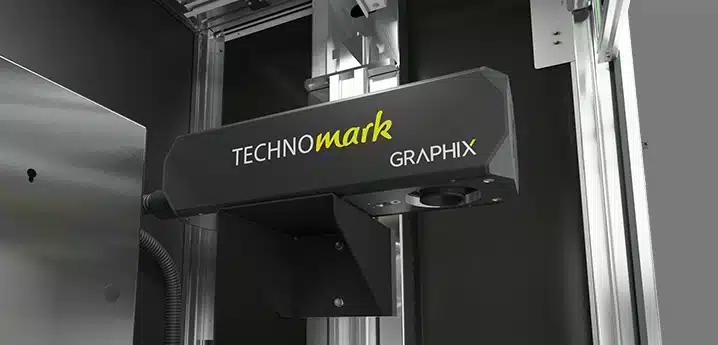The word “LASER” stands for Light Amplification by Stimulated Emission of Radiation. In simpler terms, it’s a highly concentrated beam of light.
Laser marking solutions for manufacturing
While the standard laser pointer used in lecture halls and amphitheaters is safe for the unprotected user, workpiece marking lasers fall into two categories: Class I and Class IV:
Class I lasers are housed in a safety enclosure. No laser radiation can escape from the enclosure, and the operator of the industrial laser engraving machine doesn’t need to take any additional safety measures.
Class IV means that the laser is applied in an “open” configuration where the operator can be directly exposed to the laser radiation. In this case, laser safety goggles are essential.
The above two classes of lasers are used in industrial laser marking systems and are capable of producing different types of results depending on the material to be marked. Some jobs may require marking without any physical damage to the substrate, while others require deep engraving.
Here are 5 applications for laser marking systems in the manufacturing industry:
5 applications for laser marking systems :
Different projects and materials call for different applications. Thanks to constantly evolving technology, laser marking systems can be used for :
- Classic marking
- Annealing
- Ablation
- Deep engraving
- Plastics marking
1. Classic marking
Classic marking can be more or less aggressive, depending on the desired color of the mark.
This type of marking can be performed on most metals, including steel and aluminum. Best of all, a metal marking machine is easy to program and extremely durable.
2. Annealed marking
Annealing can be used when no visible surface disruption is desired.
The material is heated by the laser beam to create a dark or burnt mark, smooth to the touch. This method is commonly used for marking medical parts, such as surgical tools or implants, to avoid any physical disruption.
Common materials that are annealed include
- Stainless and non-stainless steel
- Chromium
- Cobalt
- Titanium
- Elastomer
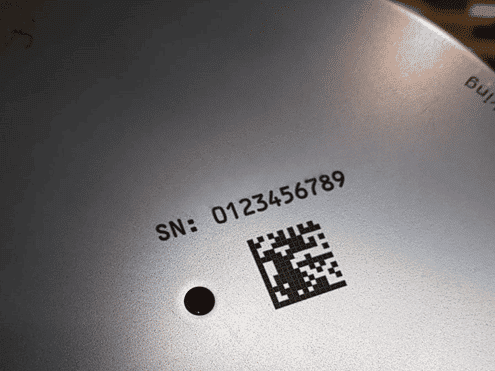
3. Ablation
Ablation is the process of removing part of a surface coating to mark or reveal the underlying material.
This is common practice for anodized aluminum products, painted materials or heat-treated surfaces. Ablation creates different levels of contrast between the mark and unaffected areas.
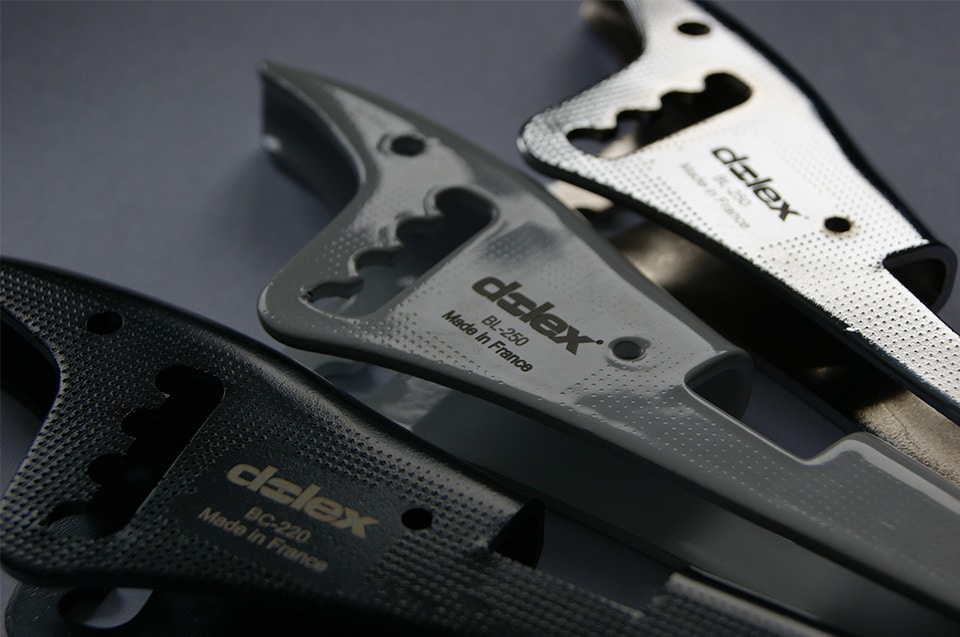
4. Deep engraving
Generally using a high-powered fiber laser, this type of marking involves the removal of material. The depth of the mark depends on :
- power
- speed
- frequency (how many pulses (kHz) per second).
By manipulating these variables, you can control the depth of the mark.
This process can be used on a wide variety of materials, including rubber and metal.
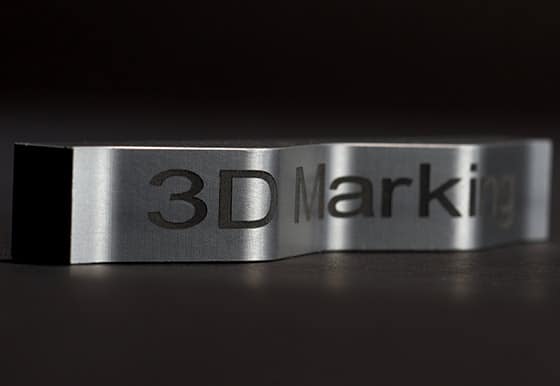
5. Marking plastic
As plastic has a lower melting point than metal, some laser settings will need to be adjusted. Lower power and higher speed are required for marking on plastic. This creates a more controlled “micro-burn” on the plastic surface.
Many manufacturers who mark on a wide variety of materials opt for fiber laser technology (a laser operating in the near-infrared range) because of the versatility it offers for marking a wide range of materials in many part marking applications. It is the most commonly used laser in manufacturing marking.
All Technomark lasers use fiber technology, which offers the widest range of applications for marking ferrous and non-ferrous metals, many plastics, as well as rubber and elastomers.
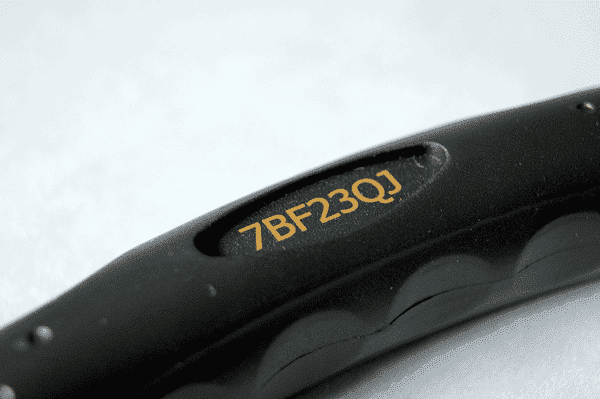
Laser marking systems for industries
- Medical
- Tools
- Automotive
- Aerospace and defense
- Electronics
- Oil & Gas
- Houseware
- Industrial machinery
- General industry
Most industries have adopted laser marking systems as a tracking and traceability solution for all the parts they produce. By marking a 2D barcode, such as Datamatrix, on the part, these marks can be scanned throughout the assembly process for total visibility of work in progress on the factory floor. This includes tracking:
Configuration management – Tracking which parts are used in which assemblies.
Production bottlenecks – How long parts take to pass through the assembly process, and where they can lose efficiency.
LEAN analysis – The number of assembly steps required to create the finished product.
This is particularly important for government/military and aerospace applications, where strict standards govern every component of a system.
Some companies have also used parts marking as a means of increasing brand awareness and discouraging counterfeiting. The presence of a logo, DataMatrix or other unique markings that are difficult to reproduce can ensure that no black-market products enter your supply chain. This can prevent costly recalls.
Applications for laser marking systems
Laser marking systems are ideal solutions for tracking and tracing. These techniques are used in the production of stainless steel medical equipment, electronic components, vehicle manufacturing and more.
Part marking solutions enable you to track and trace every part produced. Scannable parts add traceability to every shift and every worker who touches a part. Marking parts with a logo, DataMatrix, vehicle identification number or other specific identification mark reduces the risk of counterfeiting or dubious imitations.
To find out more about the right traceability solution for your industry, contact us today via our contact form.





